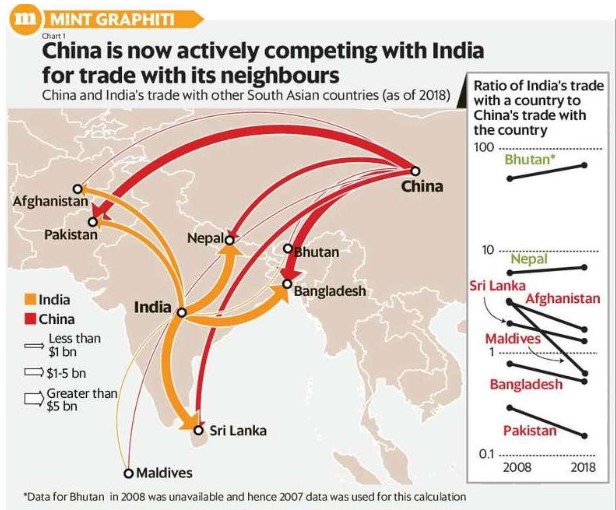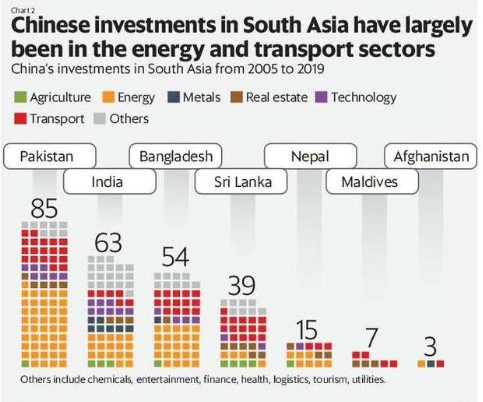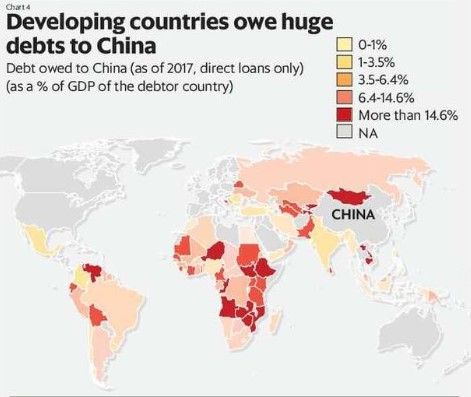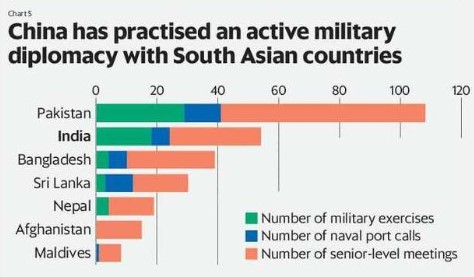Focus: GS-II International Relations
Introduction
- Over the past decade, China has boosted its economic and military ties with India’s South Asian neighbours, which could pose a challenge for India.
- Even as some strategic experts warn of a Chinese hand behind the strain in India-Nepal ties, they warn that growing Chinese influence in the region could pose a challenge for India in the rest of South Asia as well.
China taking Control over Trade
- Over the past decade, China has replaced India as the major trading partner of several South Asian countries.
- The share of India’s trade with Maldives was more than 3 times that of China’s in 2008. However, by 2018, China’s total trade with Maldives slightly exceeded that of India.
- China’s trade with Bangladesh is at present about twice that of India.
- China continues to lag India in its trade with Nepal and Sri Lanka, though the gap has shrunk.
- China is now the largest overseas investor in the Maldives, Pakistan, and Sri Lanka.

What does China invest in?
- Chinese investment is concentrated in hard infrastructure – power, roads, railways, bridges, ports and airports.
- Nearly 80% of Chinese investments in South Asia have been in the energy and transport sectors.
- China has also invested in the financial systems of these countries.

China and Debt Trapping
- China is accused of extending excessive credit with the intention of extracting economic or political concessions when countries cannot honour their debts.
- This raises fears that China’s credit to its South Asian partners, particularly via the Belt and Road Initiative (BRI), could be a strategic disadvantage for India.
- Sri Lanka had to lease out its Hambantota Port to China for 99 years, after being unable to service its debt.
- There is economic rationale for China in building alternative access to the Arabian sea to facilitate trade.

China and Military Diplomacy
- China is the biggest arms supplier to Pakistan and Bangladesh.
- Beijing is helping strengthen the navies of Pakistan, Bangladesh, and Sri Lanka to enhance their footprint in the Bay of Bengal and the Indian Ocean.
- Some experts see this as part of an encirclement or ‘string of pearls’ strategy to contain India by building a network of military and commercial facilities in the country’s neighbourhood.

Handling the situation
- While India’s understaffed diplomatic cadre and slower economic growth have been limiting factors, the inability to handle the sensitivities of its neighbours may have also contributed to the turbulence in the neighbourhood.
- The threat of Chinese presence in South Asia can be tackled more effectively if India changes course in its dealings with its neighbours and becomes more sensitive to their concerns.
-Source: Livemint



